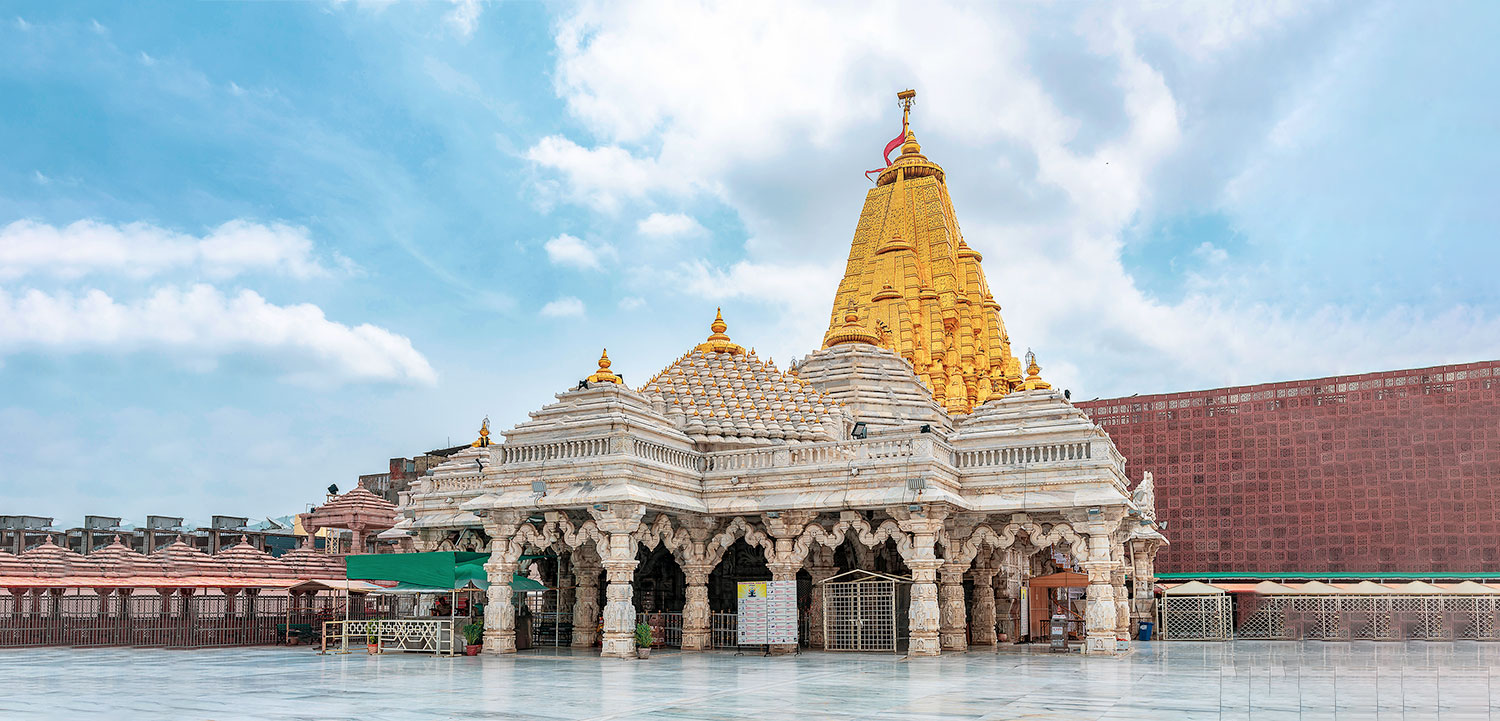Among the 51 sacred Shakti Peethas, the Ambaji Temple in Gujarat holds a unique and profound place. Located in the Banaskantha district near the Aravalli Hills, Ambaji is regarded as the divine site where Maa Sati’s heart fell during Lord Shiva’s grief-stricken cosmic journey. This event transformed the location into one of the most powerful seats of Shakti worship in India.
For centuries, devotees have flocked to Ambaji to seek blessings from the goddess, who is worshipped here as Arasuri Ambaji Mata. The temple is not just a place of faith but also a symbol of love, compassion, strength, and devotion, resonating with the symbolism of the heart.
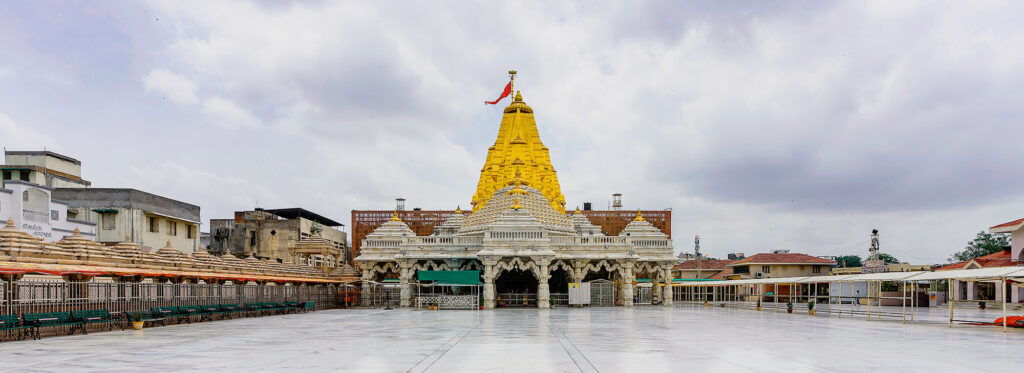
Mythological Significance
The roots of Ambaji Temple lie deep in the legend of Sati and Shiva. When Sati immolated herself in protest against her father Daksha’s insult to Shiva, the grief-stricken Lord Shiva wandered across the universe with her body. To restore cosmic balance, Lord Vishnu used his Sudarshan Chakra to dismember Sati’s body, and her heart is said to have fallen at this site in Gujarat.
The heart is the seat of love, compassion, emotions, and life force. Worshipping at Ambaji is believed to awaken these divine qualities within devotees. The goddess here is worshipped as Mool Shakti (the source of all energy), embodying the nurturing and compassionate aspect of Maa Shakti.
Devotees believe that Ambaji Temple radiates the energy of the heart chakra, symbolizing unconditional love, emotional healing, and spiritual balance.
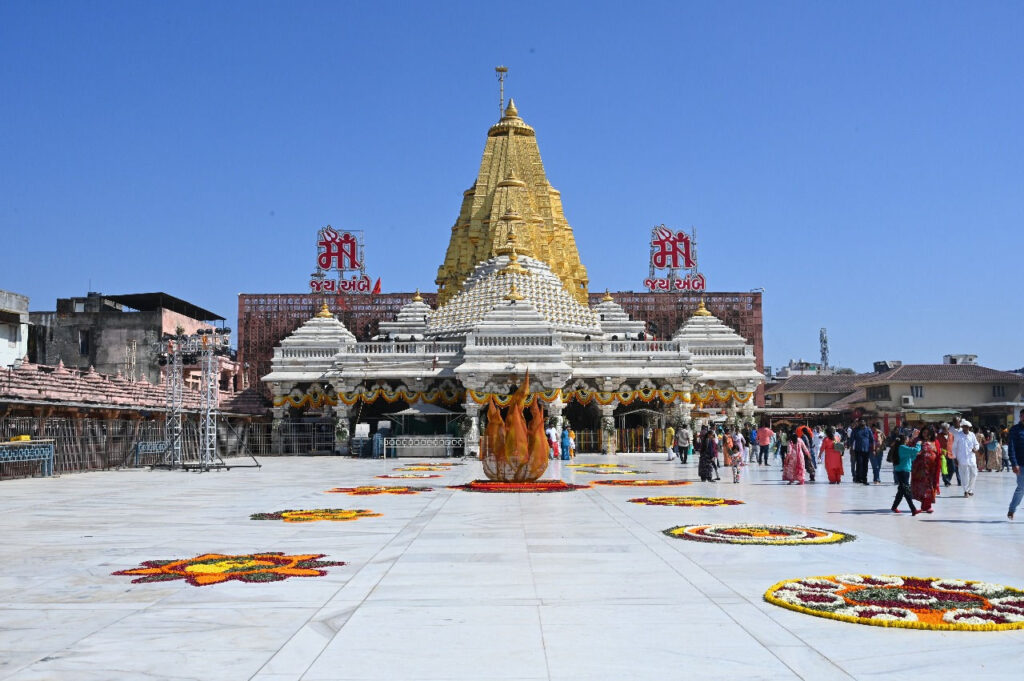
History and Cultural Importance
The Ambaji Temple is one of the oldest centers of Shakti worship in India. While its origins trace back to ancient times, the temple’s significance has been preserved through local traditions, scriptures, and oral histories:
- Ancient Roots: References to Ambaji can be found in Puranic texts, where it is praised as a prime Shakti Peetha.
- Cultural Identity: Ambaji Mata is considered the kuldevi (family goddess) of many communities in Gujarat and Rajasthan.
- Regional Pilgrimage Center: For centuries, devotees from Rajasthan, Gujarat, and Madhya Pradesh have journeyed here, making it one of the most visited temples in western India.
- Navratri Celebrations: The temple is a focal point for Shakti worship during Navratri, when thousands of devotees gather for grand celebrations.
The temple’s legacy reflects the fusion of devotion, culture, and tradition, making it a hub of both spiritual and social life in the region.
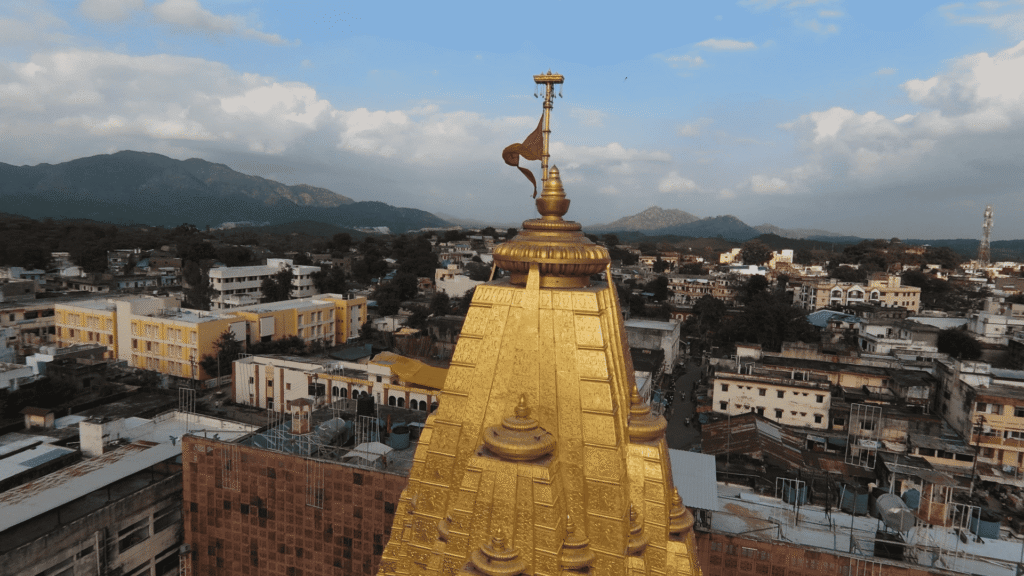
Temple Architecture and Uniqueness
The Ambaji Temple stands out for its architectural simplicity and spiritual depth.
- Sanctum Sanctorum: The main shrine does not contain a conventional idol of the goddess. Instead, the goddess is represented by a holy yantra, inscribed on a marble plate, which is worshipped as the manifestation of Maa Shakti’s energy.
- Temple Complex: Built in white marble, the temple has intricately carved pillars and a grand entrance that showcases traditional craftsmanship.
- Ambience: Unlike temples where idols dominate, here the yantra is the focal point, signifying the goddess’s abstract and infinite power.
- Nearby Shrines: Smaller shrines dedicated to other deities surround the main temple, making it a complete spiritual complex.
The absence of a physical idol highlights the universal and formless nature of Shakti, focusing worship on pure energy and devotion rather than material form.
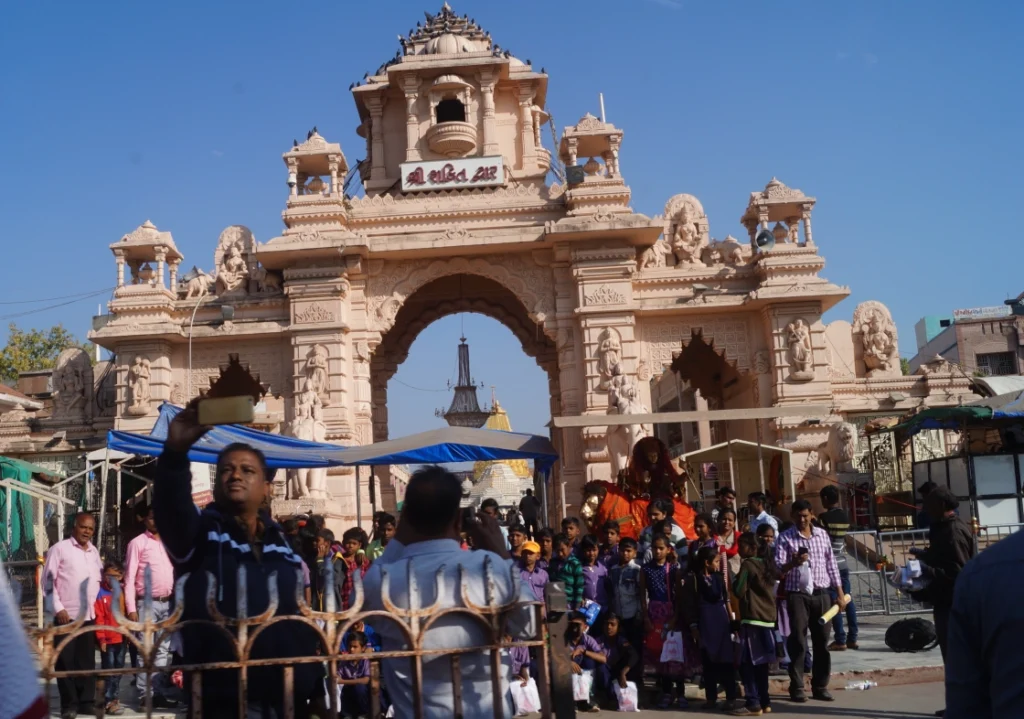
Rituals and Worship Practices
The worship at Ambaji Temple emphasizes simplicity, devotion, and surrender:
- Daily Rituals:
- Morning and evening aartis with the chanting of mantras dedicated to Maa Ambaji.
- Offerings of flowers, coconuts, and sweets placed before the sacred yantra.
- Devotees light lamps and perform circumambulation of the sanctum.
- Special Occasions:
- Navratri: Nine days of grand festivities marked by Garba and devotional songs. Thousands of devotees gather for darshan and collective prayers.
- Bhadarvi Poonam: A major fair is held annually, attracting lakhs of pilgrims from across India.
- Full Moon Days: Considered especially auspicious for offering prayers to Maa Ambaji.
- Pilgrim Practices:
- Many devotees walk barefoot for miles to reach the temple, a practice known as padayatra, as an expression of their devotion.
- Pilgrims chant the name of Maa Ambaji during their journey, believing it strengthens both body and spirit.
The rituals highlight emotional connection and purity of heart, aligning with the temple’s significance as the seat of Maa Sati’s heart.
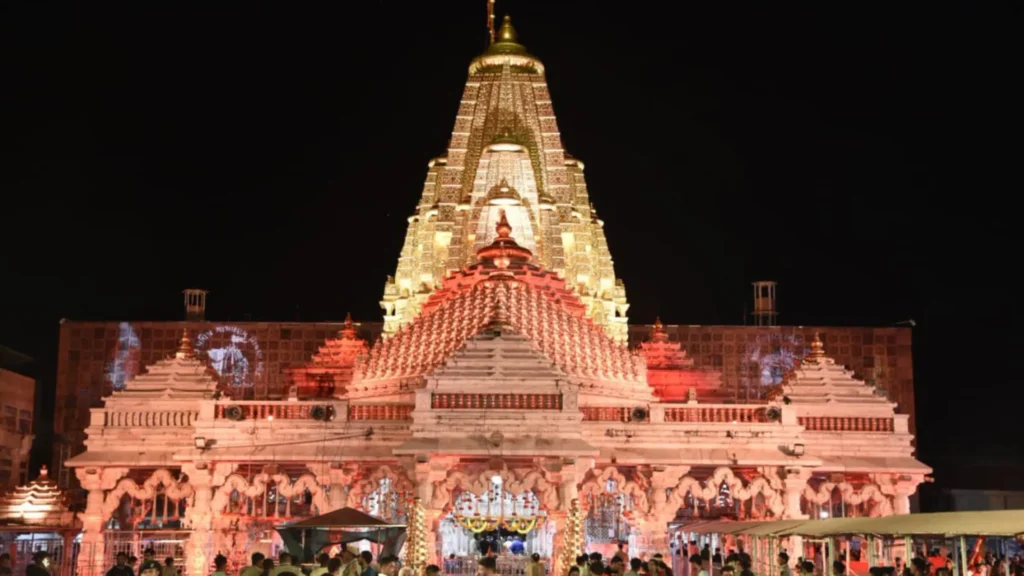
Spiritual Significance – Worshipping Maa’s Heart
The heart of Maa Sati represents:
- Unconditional Love: Worship at Ambaji is believed to open the heart chakra, fostering compassion, forgiveness, and kindness.
- Emotional Healing: Devotees seek relief from grief, stress, and personal struggles.
- Spiritual Growth: By focusing on the heart, worshippers connect with the divine essence of life.
- Strength and Courage: The goddess inspires inner resilience to face life’s challenges with devotion and faith.
Ambaji Temple thus becomes not just a site of worship but also a spiritual sanctuary for personal transformation and emotional renewal.
FAQs for Ambaji Temple
1. Why is Ambaji Temple famous?
Ambaji Temple is one of the 51 Shakti Peethas, dedicated to Goddess Amba (a form of Durga), and is a major pilgrimage site in Gujarat.
2. Where is Ambaji Temple located?
It is located at the Arasur Hills, Banaskantha district, Gujarat, near the Gujarat-Rajasthan border.
3. What is worshipped at Ambaji Temple?
The temple worships Goddess Amba, symbolizing power, motherhood, and divine energy.
4. What are the temple timings?
The temple is generally open from 6:00 AM to 8:30 PM, with daily aarti in the morning and evening.
5. Is photography allowed inside Ambaji Temple?
Photography is strictly prohibited inside the temple premises.
6. What is the significance of Ambaji Temple as a Shakti Peetha?
It is believed that the heart of Goddess Sati fell here, making it a highly sacred and powerful shrine.
7. How can I reach Ambaji Temple?
The temple is accessible by road from Ahmedabad, Palanpur, and Abu Road. The nearest railway station is Abu Road, about 20 km away.
8. Are there any special rituals at Ambaji Temple?
Yes, Navratri and Bhadarvi Purnima Mela are the biggest festivals celebrated here, attracting lakhs of devotees.
9. Is there accommodation near Ambaji Temple?
Yes, there are Dharamshalas, guesthouses, and hotels in Ambaji town for pilgrims.
10. What is the best time to visit Ambaji Temple?
September to March is ideal, especially during Navratri, when the temple sees grand celebrations.

